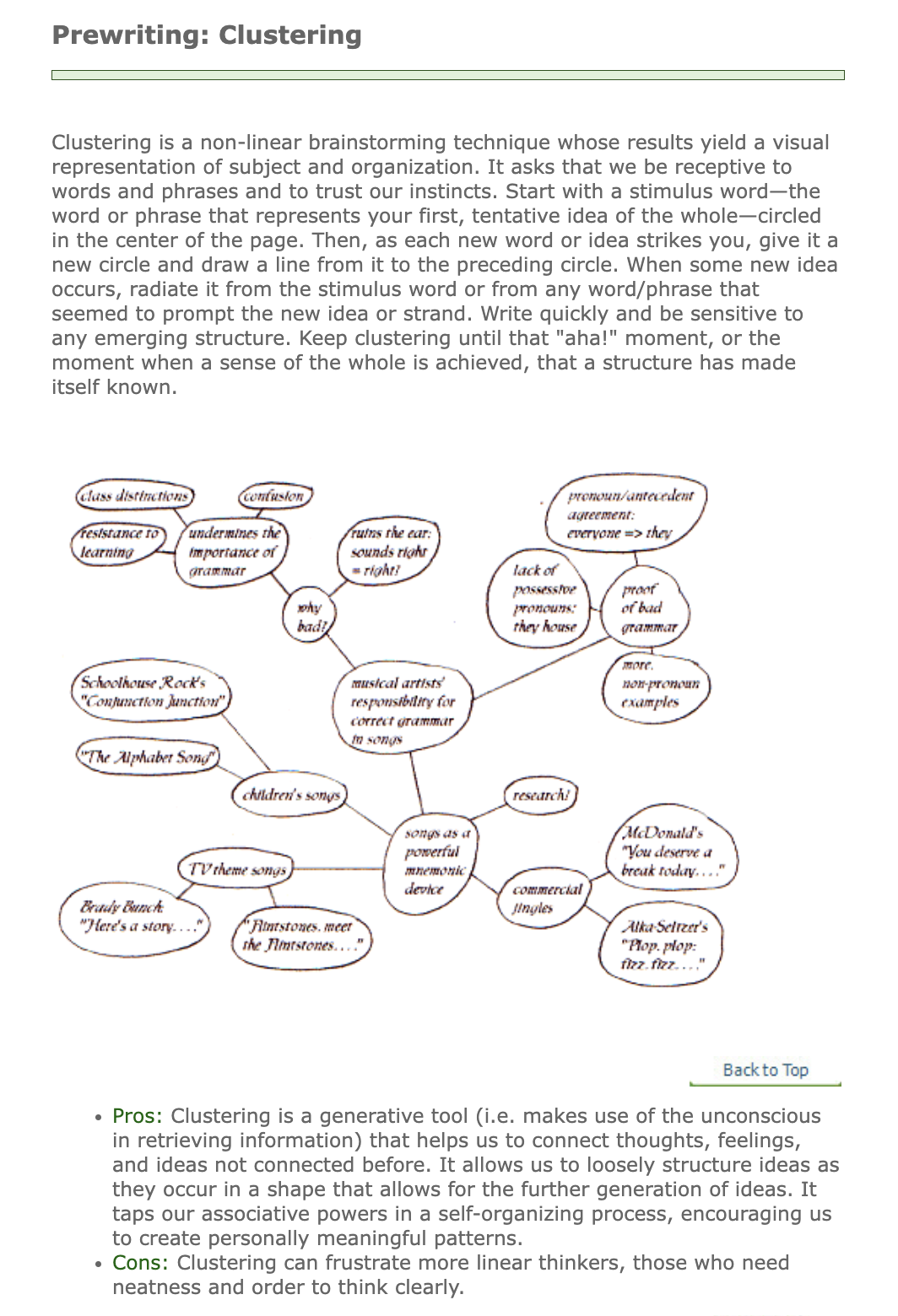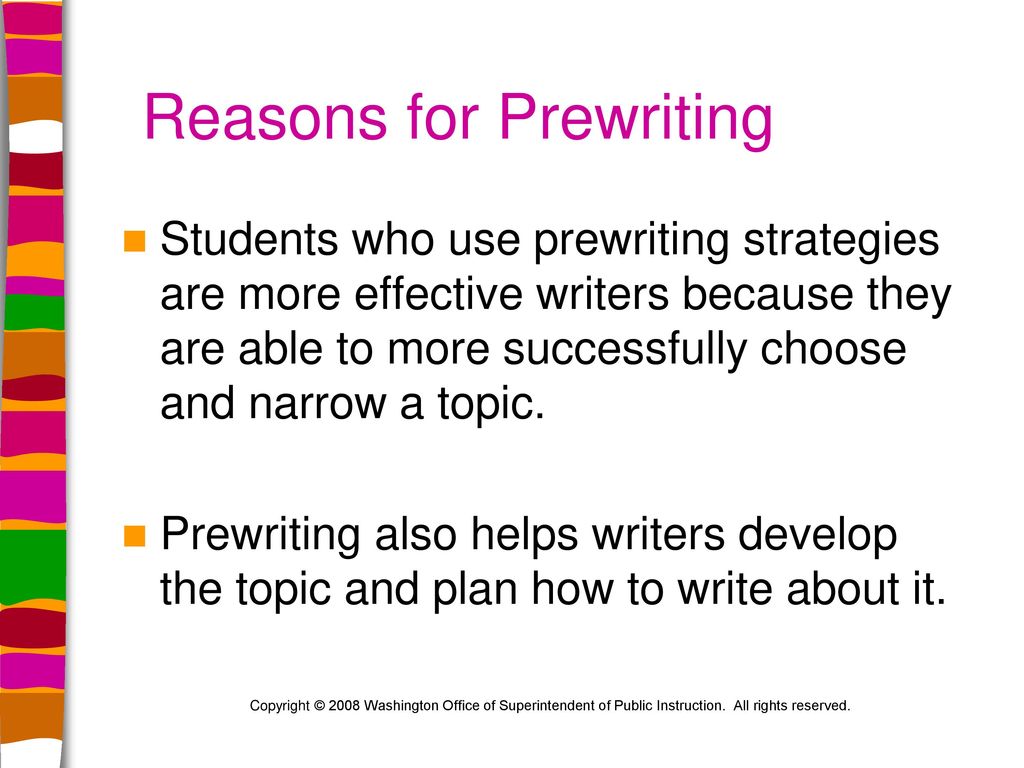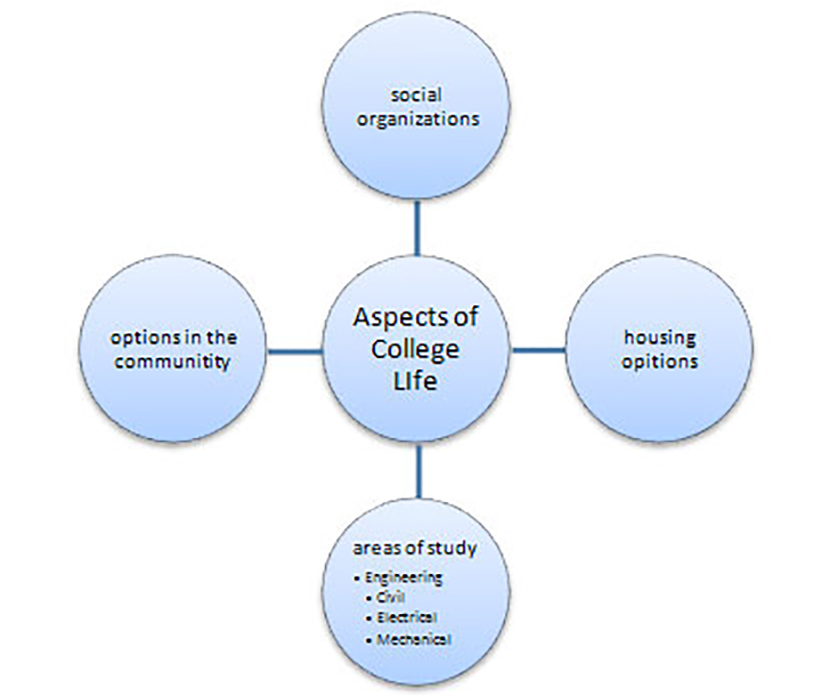Prewriting is the process of planning and organizing your thoughts before you begin writing an essay or other written piece. It is an important step in the writing process as it helps you to focus your ideas and create a clear and cohesive structure for your work. There are a number of prewriting strategies that you can use to help you get started, and in this essay, we will take a look at some examples of these strategies.
One common prewriting strategy is brainstorming. This involves writing down all of the ideas that come to mind about a particular topic, without worrying about organization or structure. This can be a great way to get your creative juices flowing and to come up with a variety of ideas that you can later organize and develop into a more cohesive essay.
Another prewriting strategy is freewriting, which involves writing continuously for a set period of time, without stopping to edit or revise your work. This can be a helpful way to get your ideas down on paper and to see what direction your writing might take.
Outlining is another prewriting strategy that can be helpful in organizing your ideas. This involves creating a visual representation of the structure of your essay, using headings and subheadings to indicate the main points and supporting details. An outline can help you to see the overall flow of your essay and to identify any gaps in your argument or areas that need further development.
Clustering, also known as mind mapping, is another prewriting strategy that involves creating a visual representation of your ideas. This involves drawing a circle in the center of a page and writing your main idea or topic in the center. From there, you can draw lines to other circles or boxes that represent related ideas or supporting details. This can be a helpful way to see the relationships between your ideas and to identify connections and patterns.
Finally, asking questions is another prewriting strategy that can be helpful in generating ideas and focusing your writing. By asking yourself questions about your topic and your purpose for writing, you can begin to clarify your thoughts and ideas and to identify what you want to say in your essay.
In conclusion, prewriting is an important step in the writing process that can help you to focus your ideas and create a clear and cohesive structure for your work. There are a number of prewriting strategies that you can use, including brainstorming, freewriting, outlining, clustering, and asking questions. By using these strategies, you can get a head start on your writing and be well on your way to creating a well-organized and well-written essay.
5 Useful Prewriting Strategies

Purpose of Prewriting The purpose of prewriting is to help writers prepare for the writing of the initial draft of a piece. What are writing strategies? Students often write their thesis statement in the conclusion of a journal entry! Your e-mail address Subscribe Thank you for subscribing to our newsletter! And it is so simple to use. Freewriting This might involve starting with a single thought and pushing it as far as it will go during your freewriting session. Are things thematically related? Instead, writers can freely let ideas come, recording them in a stream-of-consciousness manner that enables them to move from one thought to another without worrying about structural expectations, such as grammar, punctuation, organization, tense, or other writing standards. Your new point might be, 'Making calls is as dangerous as texting. Heart mapping What it is: A heart map is a visual classification of something that holds a place in your heart. What does prewriting mean? Journaling is an excellent habit for you.
Prewriting

For example, a student writing an Then what? For example, annotating, note taking, and questioning all contribute to prewriting, since those strategies start to elicit your own ideas about a text. You don't want to dive into a timed writing exam only to realize halfway through that you haven't focused on what's been asked but rather something vaguely related to it. What are prewriting steps? You can worry later about whether all of the points you make are good ones. You will be quickly be able to see how ready they are to begin drafting, if they have a viable topic, and if the topic is too big as is often the case. Just move on and keep writing.
Definition and Examples of Prewriting Strategies

Start with prewriting activities that help you unleash your thoughts and put them onto paper. You can keep a journal for your academic studies, or if you like journaling, you can keep a journal for each of your courses. What are the 5 features of effective writing? What are examples of strategies? Brainstorming What it is: Brainstorming is probably the most familiar prewriting activity. Instead of trying to establish that direction while writing a draft, that work is done in advance, making the writing stage itself more productive. Prewriting's meaning is, literally, "to write before writing. A recurring idea might be fruitful to develop into a more extended piece of writing. After students have completed a Venn diagram, they might be ready to put together an outline.
Prewriting Strategies

The purpose of prewriting is to generate an abundance of raw material and notes that will give you some strategies for writing your first draft. This will help you plan the structure of your writing project. License Terms: YouTube video. What are examples of pre writing activities? So, you might write, 'Reduce distractions,' circle it, and draw a line between that and your central point. Write that word, sentence, or phrase at the top of a new page, set the timer, and have students write about that topic until the timer goes off. Clustering is another form of brainstorming that allows writers to map the concepts they have in mind to a bigger picture.








